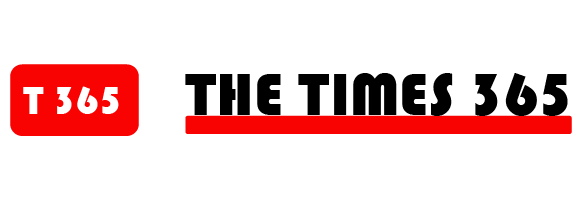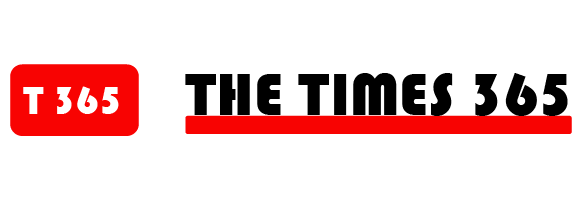What we’d leave:
The main downside of this pan, besides the added weight, is that it can break or chip if dropped, so be careful transporting it to and from the oven. And, as with the Caraway loaf pan, avoid using sharp or abrasive objects on the pan since they may scratch the nonstick glaze.
How we tested loaf pans
For the sake of consistency, we tested one-pound loaf pans in a variety of materials, including aluminum, cast iron, glass, and stoneware. Each measured approximately 8.5″ x 4.5″, with some slight variations in dimension, and we limited our selection to non-toxic pans that were PTFE-free (that’s why Williams Sonoma’s popular Goldtouch Pro Nonstick Loaf Pan is not on our list). Before baking loaves, we gave the pans a spritz of nonstick cooking spray, then placed them on the middle rack of the oven to ensure even heat distribution. We also used an oven thermometer to monitor temperature so we could say whether that stayed consistent across tests.
- For the first test, we made a whole wheat yeast-risen bread recipe from the King Arthur Flour Baking Company. This allowed us to determine how well and evenly the pans browned the loaves.
- Next, we made this zucchini quick bread from James Beard. We chose this recipe to test how well the loaves released from the pan, since baked goods with high sugar content are prone to caramelization and sticking.
- We ran a small offset spatula along the edges of all loaves before turning them out of the pan and onto a cooling rack.
- We hand-washed all after baking, even if they were marked dishwasher-safe.
What makes a good loaf pan
Like muffin pans, baking sheets, and most other essential bakeware, loaf pans are available in a variety of materials, including aluminum, stainless steel, aluminized steel, stoneware, glass, ceramic, cast iron, carbon steel, and food-grade silicone. Metal typically gives the best results, and aluminum is especially good for baking bread and cakes, since it heats quickly and gives loaves a higher rise and crisp edges. It’s also very durable. Keep in mind that darker metal pans mean a darker loaf: Dark pans absorb and distribute heat more quickly than lighter ones and may require closer monitoring and even temperature adjustments that alter what a recipe calls for. Home bakers may also want to reconsider that Pyrex glass loaf pan, because glass is breakable, heats slowly, and can cook unevenly, resulting in a loaf that’s overcooked on the outside and not quite cooked inside. Finally, since silicone pans aren’t the best at browning, we suggest avoiding them altogether.
Loaf pans come in many different weights and sizes, including special bread loaf pans like the Pullman pan. The standard loaf pan measures around 8.5″ x 4.5″ and has the capacity to make a one-pound loaf. Taller, narrow pans contribute to a higher rise than wider pans, so they’re better suited for baking sandwich bread.
Loaf pans may have square or rounded edges. Each has its pros and cons, but rounded edges are usually easier to clean. If you want a loaf pan that you can effortlessly get in and out of the oven and turn out onto a cooling rack, opt for one with handles.
The best loaf pans should never leave you in a sticky situation, which is why many have some kind of nonstick coating to release loaves easily and make cleaning a breeze. (Be sure to check the manufacturer’s website to see what the coating is made of; some use PTFE, which is part of a larger group of forever chemicals that have been linked to a range of health concerns. We’ve stopped recommending any cookware that uses them if comparable alternatives are available) Some brands produce loaf pans that are dishwasher-safe for added convenience, while others recommend hand-washing the pan with warm, soapy water and a sponge to preserve its nonstick coating. Either way, a good loaf pan should require minimal scrubbing.
Others loaf pans we liked
USA Pan Small Bread Loaf Pan
USA Pan’s Small Bread Loaf Pan was originally created for commercial bakers, so it’s no surprise that it passed our tests with flying colors. It baked evenly browned loaves, and the ridged interior and silicone coating made pan release effortless, with hardly any crumbs stuck in the creases of the pan’s folded corners. Though this loaf pan isn’t dishwasher-safe, we found it relatively easy to clean by hand. And the icing on the cake? It comes with a lifetime warranty.
Oxo Good Grips Non-Stick Pro Ceramic-Coated Metal Loaf Pan
This loaf pan from Oxo was a joy to bake with, thanks to its clever design. The extended rim provided a solid grip on the sides and ends of the pan, which was a game changer for getting it in and out of the oven. It also made turning out the loaves a snap. Both bakes glided out of the aluminized steel pan with no crumbs left behind, thanks to the slick ceramic coating. The Oxo Good Grips Non-Stick Pro Ceramic-Coated Metal Loaf Pan produced beautifully golden brown breads, with the whole wheat loaf just slightly darker near one corner, though it was barely detectable.
Thyme & Table 9” Ceramic Loaf Pan
Thyme & Table’s 9” Ceramic Loaf Pan did a surprisingly good job with both breads. Each cooked through evenly and had a toasty browned crust. The whole wheat loaf rose all the way to the top of the fluted rim, making it a bit tricky to maneuver the offset spatula around the curves, but once loosened, it slid out with very few crumbs stuck to the pan. The zucchini quick bread’s rise wasn’t quite as high and it popped out with no problem. While this ceramic loaf pan is heavier than the metal versions we tested, we think it’s an impressive budget-friendly option at just $10 — and it looks so fancy, too!
Great Jones Breadwinner
Popular cookware brand Great Jones has created another winner with the Breadwinner. The lightweight pan has a sturdy, folded metal design that gave our loaves a nice rise, and its nonstick coating and wavy corrugated bottom helped ensure that the breads didn’t stick. We tested the Raspberry color (it’s also available in Broccoli and Blueberry), and found that the sides and edges of the zucchini bread were a bit darker than the whole wheat loaf. That said, it didn’t affect the flavor at all, which is why this pretty pan still got a thumbs-up.
Lodge Seasoned Cast Iron Loaf Pan
At 3.5 lbs., the Lodge Cast Iron Loaf Pan is very heavy, but it’s well worth the weight, according to our testers. The cast iron distributed heat evenly, producing some of the best-looking loaves we baked, and the naturally nonstick surface released both breads easily. Bonus points for the sizable handles, which were much needed, considering the pan’s heft. While the Lodge Cast Iron Loaf Pan’s overall performance was excellent, our testers found it tricky to maneuver and also felt that having to occasionally season the cast iron might be an issue for some home bakers.
LeGourmet Non-Stick Bread Loaf Pan
This little-known kitchenware brand is a rising star in the bread pan world, as far as we’re concerned. The LeGourmet Non-Stick Bread Loaf Pan looks similar to our splurge-worthy favorite from Caraway, and it performs nearly as well at a fraction of the price. Aside from the fact that both finished loaves were a little uneven in appearance, they cooked through evenly with a moist crumb and crisp sides and ends. Pan release was equally impressive — a quick flip freed the loaves and no residue remained in the pan.
Loaf pans we don’t recommend
This all-aluminum loaf pan proved to be very problematic for our testers. Both loaves were irregular in shape and browning, and because the NordicWare Naturals 1 lb. Loaf Pan has no nonstick coating, pan release was a big challenge. There was a lot of sticking, especially for the whole wheat bread, which cracked on both sides. Our testers also found this loaf pan very difficult to clean.
We liked the pan’s slightly larger size, and that it came with a lid, and we even liked how well the loaves turned out, with a great rise and golden brown color. What we didn’t like? Trying to get the loaves out of the glass pan. They both stuck and needed a lot of jiggling with the offset spatula to slide them out. A significant amount of crumbs stuck to the pan, so cleanup involved soaking and scrubbing. As a bread pan or cake pan, the Oxo Good Grips Glass Loaf Pan comes up short, but we think it’d be great for meatloaf or casseroles.
We had high expectations for Emile Henry’s très chic ceramic dish — honest, we did. It’s a true show-stopper, with an elegant design and oh-so-slight handles for easy lifting. At first, things seemed promising, because both loaves of bread browned nicely. But there was quite a bit of sticking along the sides and bottom of the pan when the loaves were released. It took some elbow grease to get the pan clean. The whole wheat loaf’s center was also a little gummy and tasted slightly undercooked. Considering the brand and the cost of the pan, we expected perfection.
We’re big fans of Fat Daddio’s baking pans, but this anodized aluminum loaf pan yielded mixed results in both tests. While the whole wheat bread baked evenly, the crust was soft with no crunch. Because of the pan’s wider shape, the loaf wasn’t as tall, making it better for snacking than sandwiches. The zucchini bread baked much faster than the suggested baking times, and the sides and bottom turned a very dark brown. Despite using nonstick spray, there was significant sticking after turning out both loaves, and the pan needed to soak a while to get it clean.
Unlike Chicago Metallic’s aluminized steel loaf pan, the carbon steel version underwhelmed us. Since the metal is darker, we kept a close watch on both loaves to make sure they didn’t brown too quickly. The whole wheat bread fared well in our test, with a nice brown crust, but the zucchini bread had very dark, almost burnt patches along the loaf’s too-crisp edges and bottom. Though pan-release and cleanup were simple, we recommend sticking with the aluminized steel version.













